Asters and hoverflies
There are a few more things to show you. The New England Asters are attractive to a wide variety of creatures: flies (especially the many species of hoverflies), butterflies, and bees. Mine are actually a hybrid of Purple Dome, a low purple aster and a very tall hot pink aster, all New England varieties. When the original decorative asters passed on, their offspring began to differentiate into many shades from pale pink to mauve to bright pink to several shades of purple. They come into bloom about the same time as the goldenrod and so there does seem to be some community mixing.
My favorites are the hoverflies, which I first thought were bees. They seem to mimic lots of kinds of bees, and many of them are very attractive. Their larvae (maggots) eat either dead or decaying plant matter or even smaller insects. They are eminently beneficial! The hoverflies themselves are sometimes called "flower flies". This little fly is only about a quarter-inch long, but look at the color and pattern. Then you have this very large one (and you've already seen that wasp-mimicking one.) Here is a mating pair so time for a fly sex lesson. Many flies have large eyes, and their males have eyes so large they touch in the middle of their faces. The male is also commonly the one on top.
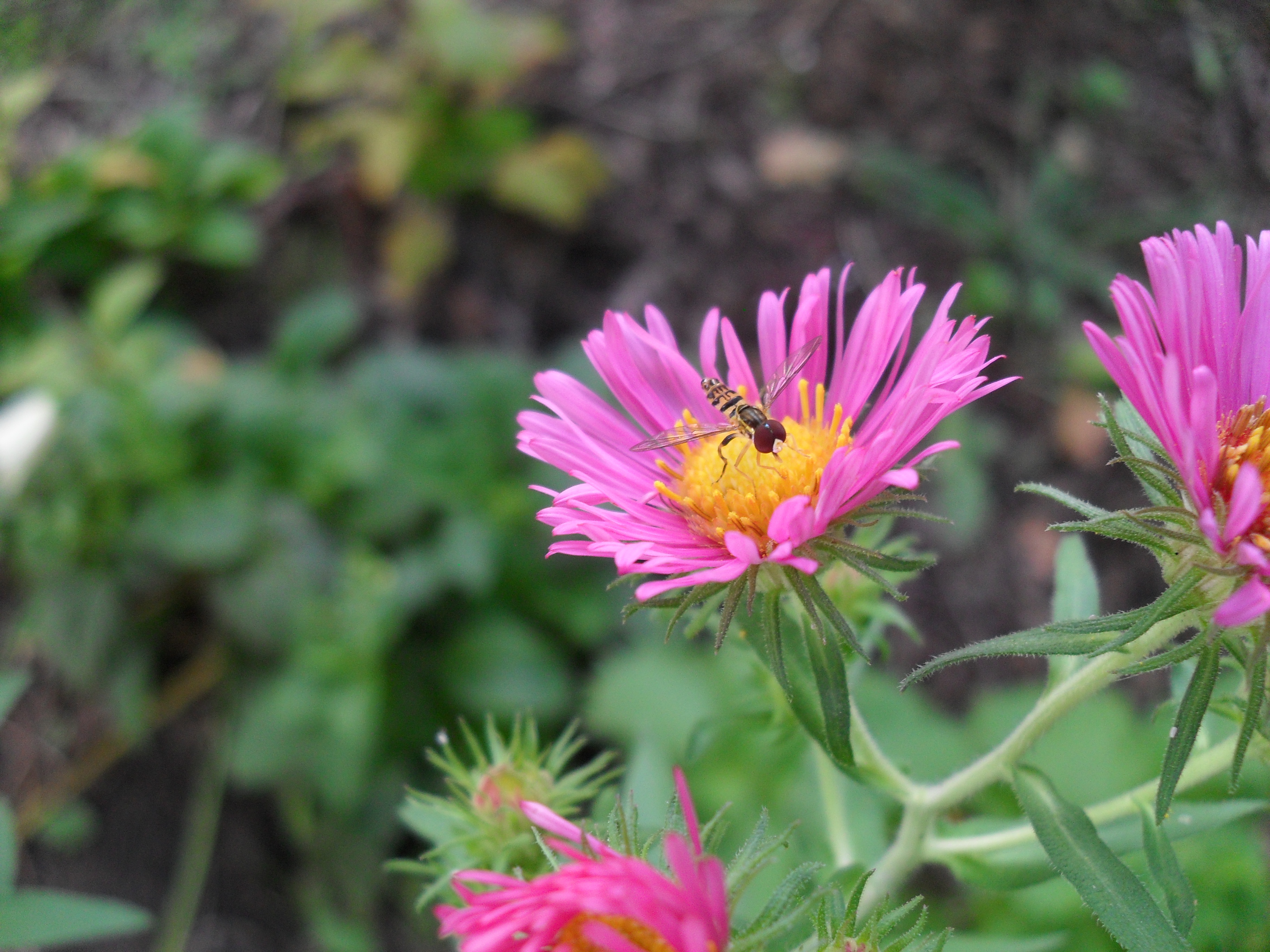
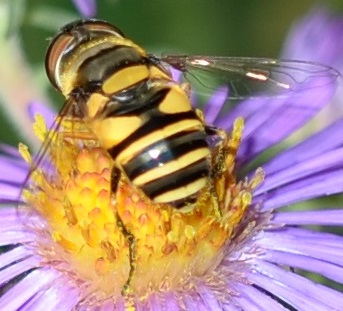
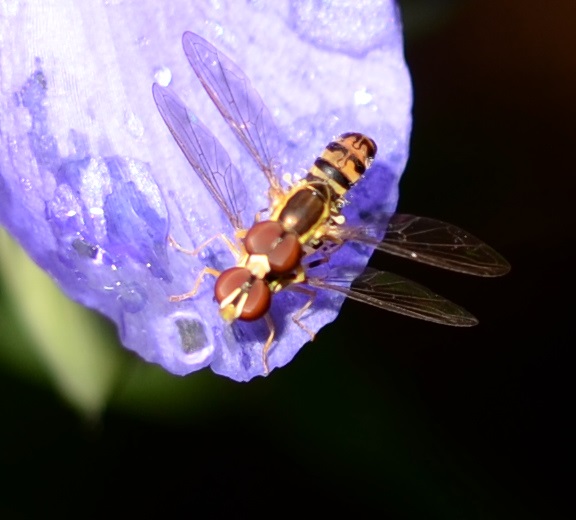
Another kind of fly that is around in late April and for most of the summer after that is the March fly. They are very interesting flies, and sometimes you will see them doing things that remind you of things people do. Here is a female March fly washing her "hands". And this is a pair of March flies, female and male. As in many insect species, the females and the males don't look much alike, do they? These two kinds of March fly are two different species. (Note that one has an orange thorax and the other black.) The beautiful creature on the right is a Dance Fly, whose chief food is March Flies!
.jpg)
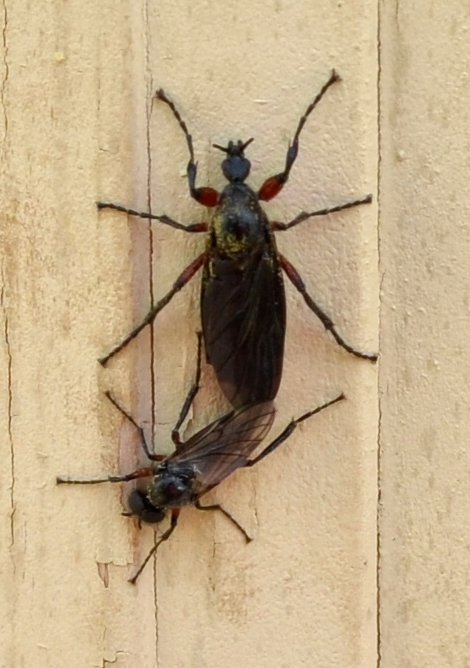

This large fly is called the Tiger Bee Fly. Its larva parasitizes Carpenter Bees. This tiny midge has a parasitic mite on its cheek. Midges are such tiny flies that it is very hard to see them without a camera to enlarge them for you. And they come in a wide variety of color schemes. I love this lime green one!
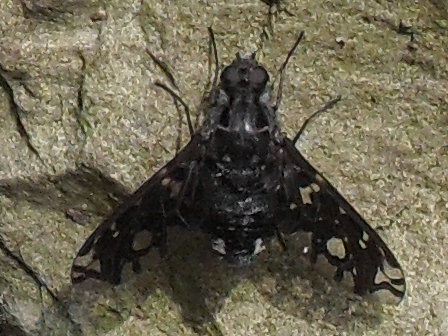

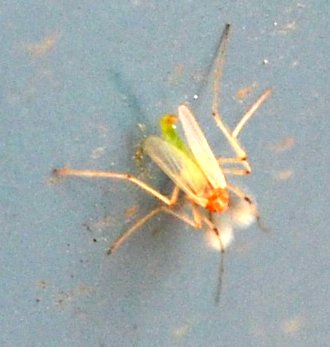
Speaking of brilliant colors, in June the tiny long-legged flies begin to come. Every angle at which the light touches them they iridesce in a different set of colors. They are carnivores and eat all manner of noxious other bugs. Their larvae live on rotting vegetation. So this insect is pure pleasure for you and me, and the sanitation engineers of the garden.
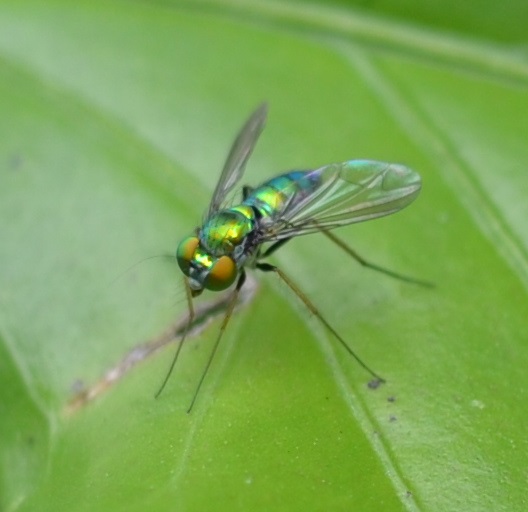
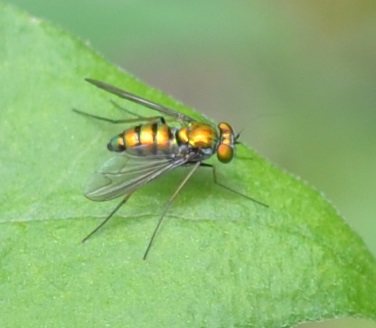
So some of the flies are among the most beautiful insects around. You have seen some of the treehoppers, but there are some that are even prettier than those. Here are two buffalo treehoppers, one bright green and one brown and camel colored. A relative called the leafhopper also has some of the prettiest little insects alive. Here is the candy-striped one. The second one is carrying around a ball of liquid. Apparently this is NOT for the the ants, but is simply a lovely bit of exudate. (2018) I've now learned that because the leafhopper eats so many leaves and other bits of plants, it has to let off urine. Our friend here is just looking for a suitable place to drop it off.
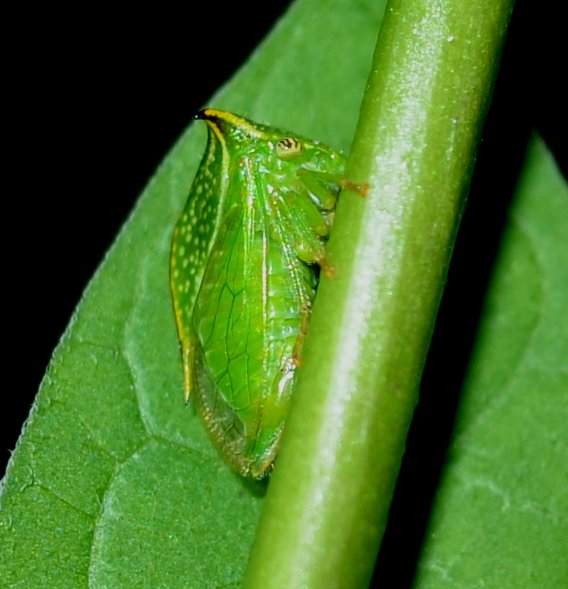
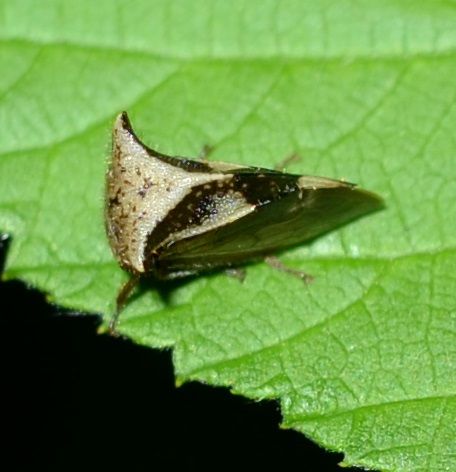
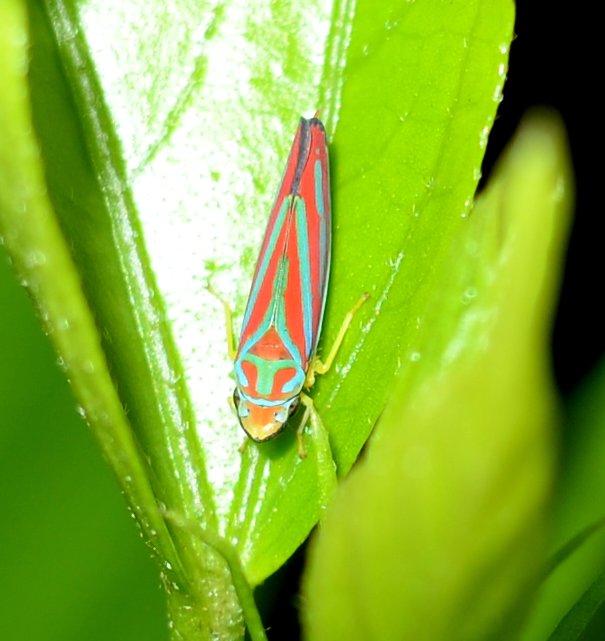

Next just a few more surprisingly beautiful creatures that you might consider rearing some summer.Next






.jpg)










